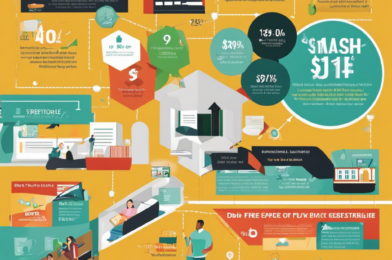As a savvy consumer, you know the frustration of soaring energy costs. The good news? You can fight back with some simple, clever hacks to reduce your energy bills. It’s time to take control and keep more money in your pocket!
First, let’s talk about your lighting choices. LED light bulbs use up to 90% less energy than incandescent bulbs and last a lot longer. That means you save money on your energy bill and don’t have to replace them as often. It’s a bright idea to make the switch! Solar lighting is another brilliant option, especially for outdoor spaces. Harness the power of the sun and say goodbye to costly electric lighting.
Next, unplug vampire appliances. Many electronic devices and chargers draw power even when they’re turned off. These energy vampires lurk in every home, silently sucking money from your wallet. Identify the culprits and slay them by plugging them into power strips that can be switched off when not in use. That simple step could save you up to $200 a year!
Your thermostat could also use a nudge in the right direction. Installing a programmable thermostat lets you automatically adjust the temperature when you’re asleep or away, cutting costs without compromising comfort. Going one step further, invest in a smart thermostat. These devices learn your habits and preferences and can be controlled remotely, so you can adjust the temperature on the go and come home to the perfect climate.
Now, let’s look at those drafty windows and doors. They might be beautiful, but if they’re letting in chilly drafts, they’re also letting your money blow away. Seal up those leaks with weatherstripping and caulk. It’s an easy DIY project that will pay for itself in no time. While you’re at it, check your attic and basement for gaps or insufficient insulation. Bulking up on insulation keeps the heat in during winter and out in summer, reducing the strain on your heating and cooling systems.
Speaking of strains, your appliances might be working harder than they need to. Ensure your refrigerator and freezer are set to the most efficient temperatures—aim for 37-40°F for the fridge and 0-5°F for the freezer. Regular maintenance, like cleaning the coils, also improves efficiency. Also, remember to run full loads in your washing machine and dishwasher, and use energy-saving settings whenever possible.
Water heating is another area where you can scald your money. Lower your water heater’s temperature to 120°F – it’s hot enough for most uses and reduces the risk of scalding. Insulating your water heater and the first six feet of the hot water pipe can also prevent heat loss and save you a pretty penny.
Lastly, take advantage of rebates and incentives. Many utility companies offer rebates for energy-efficient appliances and home improvements, and some even provide free energy audits to help you identify areas for improvement. Tap into these resources and you’ll be well on your way to slashing those energy bills.
Remember, small changes can make a big difference in your energy costs. By implementing these easy home hacks, you’ll not only save money but also reduce your carbon footprint. It’s a win for your wallet and the planet!









